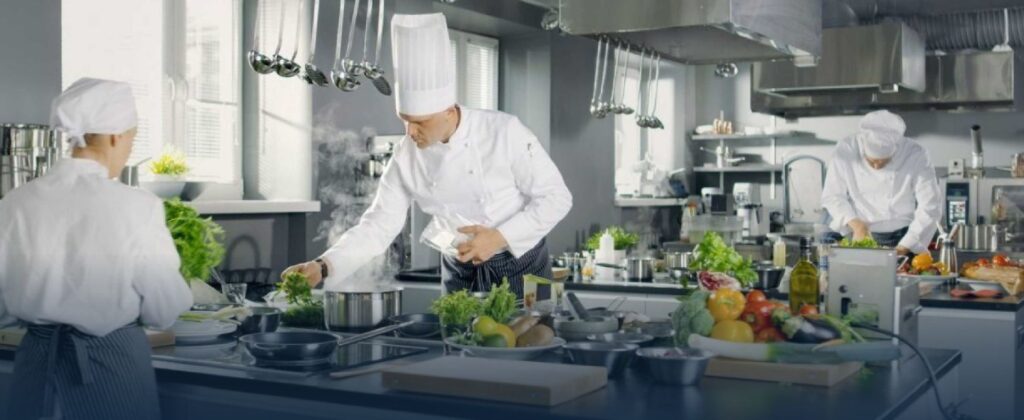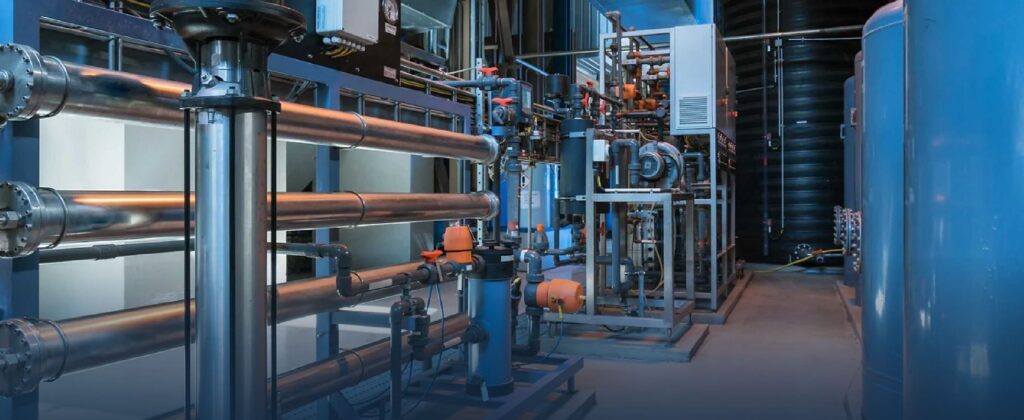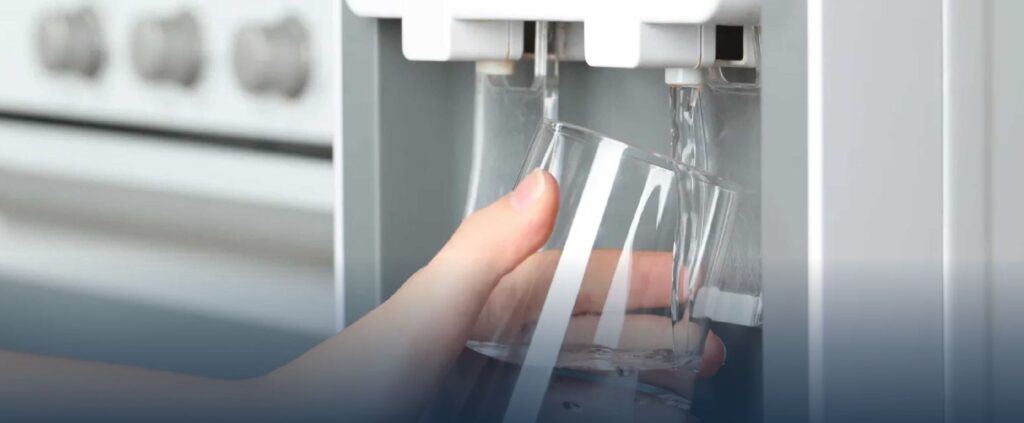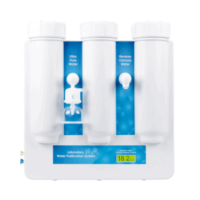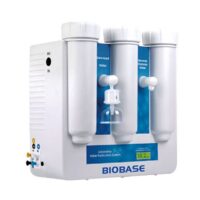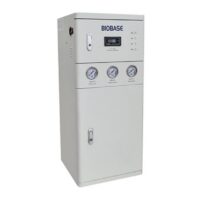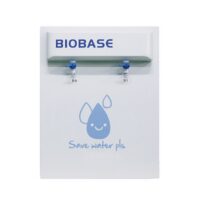Description
Biobase Laboratory Water Purifier 120/150/200L
The Biobase Laboratory Water Purifier 120/150/200L is a series of high-capacity water purification systems designed for use in large laboratory and medical settings. These systems are manufactured by Biobase, a leading provider of laboratory equipment and solutions.
The Biobase Laboratory Water Purifier 120/150/200L series features a multi-stage water purification process that removes impurities and contaminants from the water, including bacteria, viruses, organic compounds, and heavy metals. This ensures that the water is of the highest purity and is suitable for use in a wide range of laboratory applications, such as cell culture, molecular biology, and clinical analysis.
The series comes in three different sizes, with capacities of 120 liters, 150 liters, and 200 liters. This makes them ideal for use in large laboratories or for applications where a large volume of water is needed.
The Biobase Laboratory Water Purifier 120/150/200L series uses a combination of reverse osmosis, activated carbon, and ion exchange to remove impurities from the water. The reverse osmosis membrane is particularly effective at removing dissolved salts, organic compounds, and microorganisms from the water, while the activated carbon and ion exchange resin are effective at removing chlorine, heavy metals, and other contaminants.
The systems also have a number of safety features that ensure the purity of the water. For example, they are equipped with UV lamps that sterilise the water and prevent the growth of bacteria and other microorganisms. They also have built-in leak detectors that automatically shut off the system if a leak is detected, preventing any contamination of the purified water.
The Biobase Laboratory Water Purifier 120/150/200L series is also equipped with user-friendly interfaces that allow for easy operation and monitoring of the purification process. The systems feature touch screen displays that provide real-time information on the status of the purification process, as well as alerts for maintenance and filter replacements.
Overall, the Biobase Laboratory Water Purifier 120/150/200L series is a high-quality and reliable water purification system that is well-suited for use in large laboratory and medical settings. Its advanced filtration technology and safety features make it an ideal choice for laboratories that require a high degree of purity and reliability in their water supply.
About High Purity Laboratory Water
Here we explain the four types of water used in laboratories, as well as the processes and properties of each type.
1.Ultrapure Water (Type 1)
With a resistivity of 18.2 MΩ-cm at 25°C, ultrapure (Type 1) water is a requirement for analytical laboratories. Flow cytometry, pyrogen sensitive applications, and cell and tissue culture are all typical applications for Type 1 water.
Water with this type of resistivity can still contain organic contaminants, endotoxins and nucleases which don’t impact on resistivity values, so other technologies are required to eliminate them.
Equipment that produces Type 1 water is often referred to as a “polisher” and can be fed from a localised reverse osmosis system, or a centralised ring main depending on usage rate.
Bacteria and organic levels are reduced to the required level, through a dual wavelength ultraviolet (UV) light (185nm and 254nm). The water flows through a vessel containing a UV light, and as it passes through, the light, destroying any genetic organic matter, associated for reproductive functions. This damage prevents the microorganism from multiplying or replicating, which means no infection can occur.
An Ultrafilter (UF) typically rated at 0.01 microns, can also be employed to produce DNase/RNase free water. By using size exclusion, ultrafiltration removes particles and macromolecules including bacteria and viruses. This technology is employed at the end of the system, to ensure the near-total removal of macromolecular impurities.
Each type of water must go through various processes and technologies to achieve a certain standard of purity. The level of purity then reflects what can be used in laboratories. For that reason, it’s important to be able to distinguish between the four types of water, so you can understand how they are utilised in laboratories.
2.General Laboratory Grade Water (Type 2)
Also known as general laboratory grade water, Type 2 water is produced through a combination of reverse osmosis, and additional technology such as ion exchange or electro deionisation (EDI). Electro deionisation (EDI)is an electrically driven water treatment technology that uses electricity, ion exchange membranes and resin to remove ionised species from water.
Deionisation removes ions (cations and anions) from RO water by using ion selective resins. Chemical reactions occur as the water passes through the ion exchange beads, resulting in the removal of ions. This process is continued until all unwanted ions are replaced by hydrogen and hydroxyl ions, which form pure water once combined.
Electro deionisation (EDI) is a continuous, chemical-free process of removing ionized and ionizable species from feedwater using DC power. EDI is typically used to polish reverse osmosis permeate and is an alternative to Ion Exchange Technology. Using electro deionisation eliminates the need to store and handle the hazardous chemicals used for resin regeneration in mixed beds.
Reverse Osmosis and Ion Exchange Technology create Type 2 water, which has a resistivity of 1-15MΩ-cm, making it suitable for general applications such as buffer and media production, spectrophotometry and general chemistry.
3.Primary Grade Water (Type 3)
Primary grade pure water (Type 3) uses carbon filtration, cartridge filtration and RO technology and is the most cost-effective way to reduce water contaminants for this application.
Removing up to 99.5% of feed water contaminants, reverse osmosis membranes rated at nominally 0.0001 microns purify water by virtue of rejection. Reverse osmosis (RO) is a water purification process that uses a partially permeable membrane to separate ions, unwanted molecules and larger particles from drinking water. In reverse osmosis, an applied pressure is used to overcome osmotic pressure.
RO technology applies diffusion as opposed to separation, rejecting particles with a higher molecular weight. Feed water temperature, pressure, and the physical condition of the RO membrane are all parameters that affect rejection rates. Rejection rates depend on a number of factors including feed water quality, water temperature and pressure. For this reason, RO water can’t be specifically classified.
RO water is most commonly used at the starting point for many applications in laboratories, including feeding glassware washing machines and autoclaves. It can also be used as a pre-treatment for ultrapure water systems, or anything that’s considered non-critical.
4.Feed Water
Feed water is also referred to as raw or potable water, and the quality of it is dependent on its source. It is important to obtain a detailed water analysis before deciding on an appropriate system for your facility. Any contaminants present in the feed water can substantially inhibit the performance of the RO membrane and result in fouling and reduced service life. Below are some examples:
Hard Water: Will require a water softener to remove hardness.
Presence of colloidal clay particles: Will require media filtration and also ultra filtration as a pretreatment.
Presence of iron and manganese: Will require water softener or catalytic media filtration.
Low feed pressure: Will require a booster pump to ensure sufficient pressure for the RO system. Each filtration step will result in a pressure drop; hence a reasonable feed pressure is required to begin with. Some laboratory units do come with internal booster pumps that mitigate this concern. The data sheet of the particular RO membrane used, will provide data such as optimum supply pressure to maximise ion rejection.
Features:
- High Quality RO membranes.
- Fully automated control, one key boot, simple operation.
- With high pressure and low-pressure protection, safer operation.
- With consumable replacement alarm.
- Compliance with national standard GB/T6682-2008 water requirements.
- LCD display, display water quality information.
Technical Specifications:
| Model | SCSJ-II-120L | SCSJ-II-150L | SCSJ-II-200L | |
| Water Output Type | RO water outlet *1 and DI water outlet *2 | |||
| Water Output Speed | 120L/H | 150L/H | 200L/H | |
| Purifying Sequence | PF+AC+RO+DI | |||
| Water Supply Requirement | Inlet water pressure required of 0.1-0.3Mpa, and the water quality meet the requirements of Gb5749, 15 ~ 35°C, or ADWG Guidelines for Potable water. For Hard water we recommend a water softener to extend the life of the membrane. | |||
| Environmental Requirements | Temperature 15 ~ 35°C. Relative humidity <80% | |||
| Purification System | 20″PP filter *1, 20″ granular active carbon filter *1 | |||
| 20″ compressed activated carbon filter *1, 400GPD RO membrane *2 | ||||
| Deionisation purification column *2 | ||||
| DI Water Quality | Resistivity | 10-18.25MΩ.cm | ||
| Conductivity | 0.055-0.1μs/cm | |||
| Heavy metal | <0.1ppb | |||
| Particle | <1/ml | |||
| Bacteria | <0.1cfu/ml | |||
| RO Water Quality | Ion rejection rate | 96%-99% | ||
| Organic rejection rate | >99% | |||
| Particles & bacteria rejection rate | >99% | |||
| Pressure Tank | Built-in | External | ||
| Consumption | 230W | |||
| Power Supply | AC220V±10%, 50Hz±5% (Standard); AC110V, 60Hz (Optional) | |||
| Standard Configuration | 750*600*1200mm | |||
| Instrument Size (W*D*H) | 750*600*1200mm | |||
| Package Size (W*D*H) | Instrument | 770*620*1350mm | ||
| Pressure Tank | / | 390*390*775mm | ||
| Accessory Box | 555*315*170mm | |||
| Gross Weight | 110kg | 123kg | ||
Consumables
| 400GPD RO Membrane for 120L, 150L, 200L | About 12 months | $240.00 |
| 800G RO Membrane for 150L, 200L | About 12 months | $462.00 |
| 20″ PP Filter | About 4-6 months | $21.00 |
| Ion Exchange Column | About 20000L pure water/set | $412.00 |
| 20″ Activated Carbon Filter (Coconut Shell Material, Iodine Adsorption Value 1050mg/g) | About 4-6 months | $42.00 |
| 20″ Activated Carbon Filter (Length 508mm, Outer Diameter 62mm, Inner Diameter 28mm) | About 4-6 months | $42.00 |

